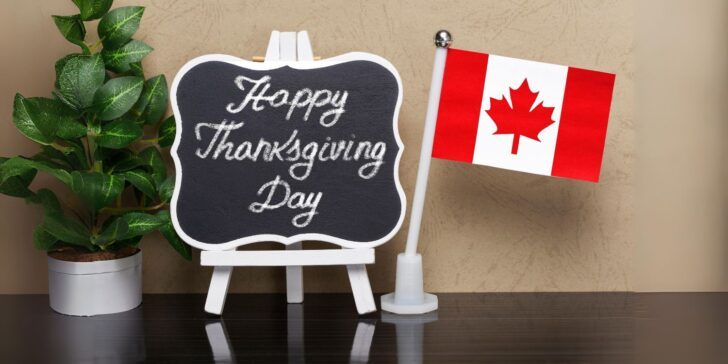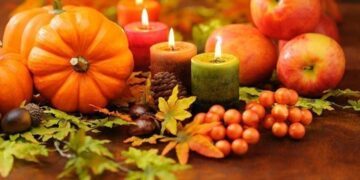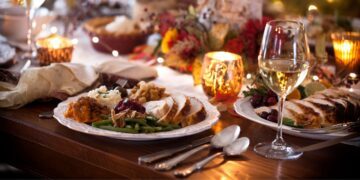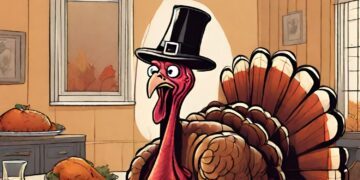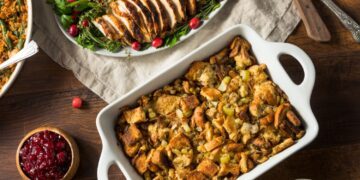Thanksgiving is a celebration filled with delicious food, history, and controversy, and Canadian Thanksgiving is no different!
Whether you are thankful for the bountiful harvest each year brings or just the safety of the ones you love; it’s a good idea to spend some time appreciating what you have.
Here are some interesting facts you can annoy your family with at the Thanksgiving table this year.
Canadian Thanksgiving is older than American Thanksgiving.
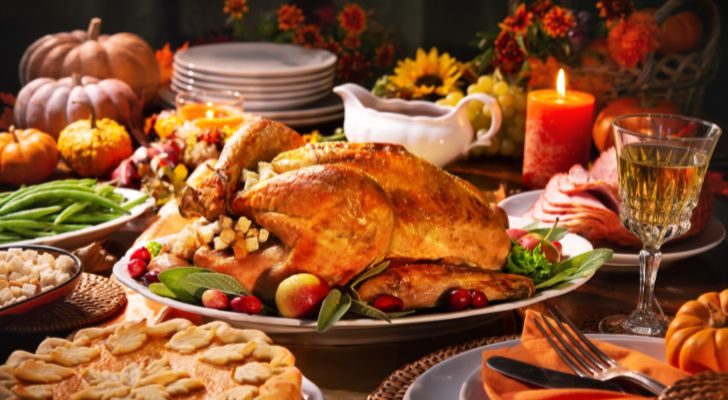
In 1578, 42 years before the first American Thanksgiving, Sir Martin Frobisher set out to find the Northwest Passage, a shipping route around the Arctic Circle.
After a grueling trip across the Atlantic Ocean, during which he lost one of his fifteen ships to ice and intense storms, they anchored in Newfoundland.
Although they never found the passage, Frobisher and his settlers survived the cold and stormy waters and docked safely in Canada.
There, they held the first Thanksgiving, giving thanks mostly for their safe arrival in the new land.
Europeans were not the first in North America to celebrate Thanksgiving, either.
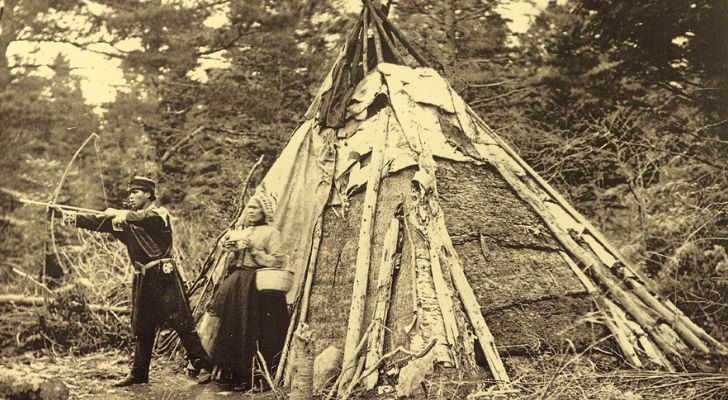
Although it wasn’t called Thanksgiving, the Indigenous people of North America have had celebrations to thank the earth during harvest time for many generations.
Indigenous people like the Mi’kmaq and many others on the eastern side of North America and around the Great Lakes celebrated the harvest with music, song, dance, gifting, and feasting.
These celebrations weren’t just an afternoon of eating with your immediate family and a few distant cousins. They included the entire community and sometimes lasted an entire week!
The Order of Good Cheer was created to give thanks and fight scurvy.
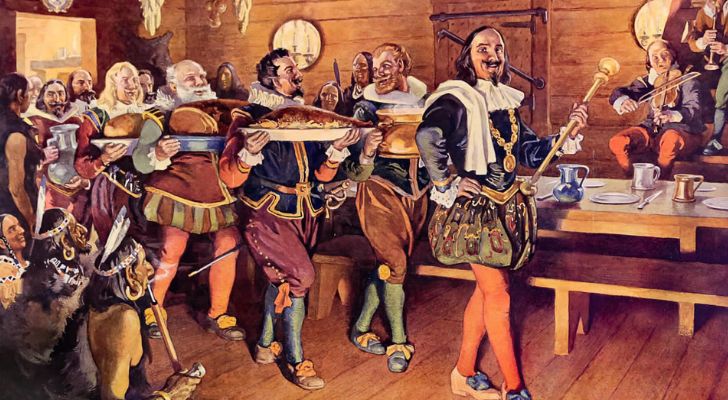
In the years leading up to 1606, French settlers and fur traders in today’s Quebec experienced an epidemic of scurvy, which was then known as “land sickness” and thought to be caused by idleness.
To combat this, French Explorer Samuel de Champlain founded The Order of Good Cheer, a series of rotating feasts during which there were plays, musket shooting, and celebrations.
The very first order was held on November 14, 1606, to give thanks for Jean de Biencourt de Poutrincourt’s safe return from an expedition.
Over time, this tradition blended with Thanksgiving.
Cranberries aren’t just a delicious Thanksgiving fruit.
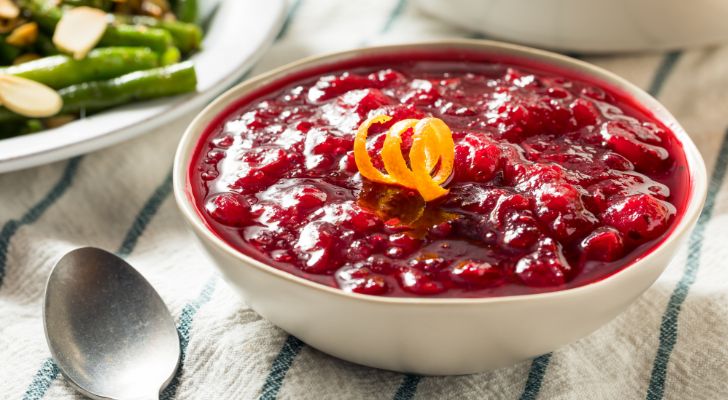
Although we now use cranberries in jams and pies and eat a lot of them during Thanksgiving, they have many more uses and play a vital part in First Nation life.
They have been a staple at both settler and First Nation Thanksgiving tables for centuries.
One old First Nation recipe would be to grind the cranberries together with venison to create a kind of protein bar that is kept well for the winter.
The fruit was likely used by the first settlers to combat scurvy, which settlers were fighting for a long time before being shown what to eat by the First Nation folk.
Canada has a hotline you can call for help with your Thanksgiving turkey!

In 1981, six home economists got together to solve the problem of bad Thanksgiving turkeys.
Since then, the Butterball Turkey-Talk line has opened every November and December to answer questions about cooking turkeys by North Americans.
In the first year, those six people answered around 11,000 turkey-related questions. Today, around 50 experts in turkey roasting answer over 100,000 questions every Thanksgiving season.
So, if you are ever at a loss while cooking Thanksgiving dinner, call 1-800-BUTTERBALL!
Ontario celebrates Thanksgiving alongside Oktoberfest.
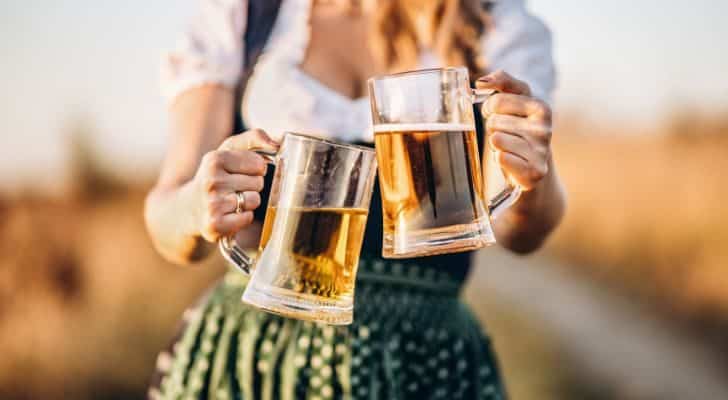
Every year, around 700,000 people gather in the twin cities of Kitchener–Waterloo for the second-largest Oktoberfest in the world.
The event starts on the Friday before Thanksgiving and ends on the following Saturday.
The biggest day in this event is Thanksgiving Sunday, when the Kitchener–Waterloo Oktoberfest holds its annual Thanksgiving parade.
Alongside floats and adorned with costumes, people celebrate Thanksgiving with a huge feast and, of course, lots and lots of beer.
Canada only made Thanksgiving an official holiday in 1879.
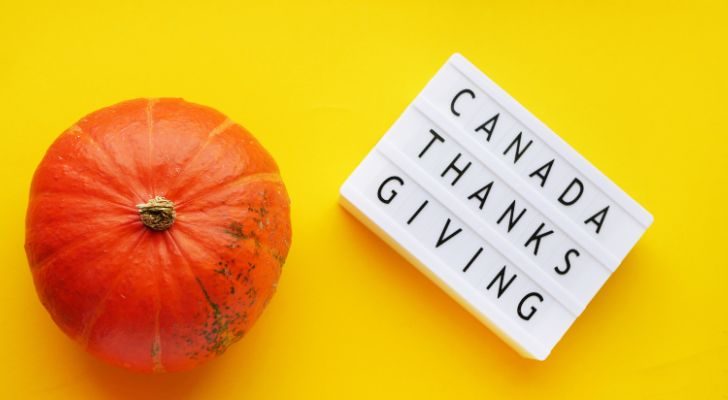
The event had been celebrated sporadically for three hundred years before Canada made it an official holiday on November 6, 1879.
Parliament would decide the specific date each year after that, either in October or November and sometimes as late as December!
Before then, it was held on different days each year, usually for a specific reason, like an important person arriving back from a dangerous trip, and sometimes they just didn’t have Thanksgiving that year!
In 1957, the Canadian parliament decided it should be a fixed date and that Thanksgiving would be held on the second Monday of October from then on.
Thanksgiving is a source of anguish for many.
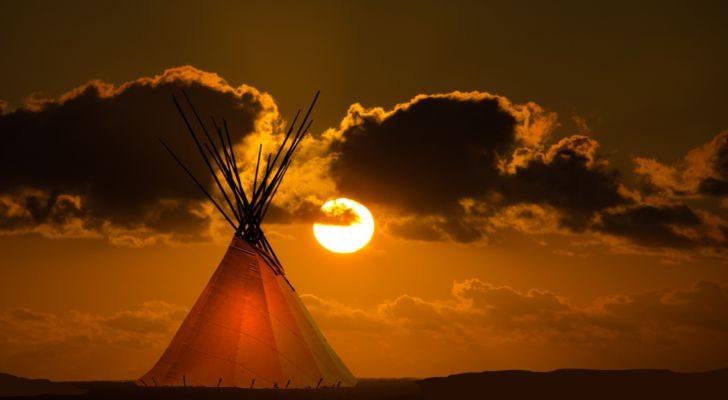
Early European settlers like John Cabot claimed to have discovered Canada for themselves in 1497.
However, we know that well-established nations lived there, and they tell a very different story of how Thanksgiving came to be.
According to Biindigegizhig Deleary, an Indigenous educator, it is a very dark story about how settlers had been saved from starvation and scurvy by the native people of North America, only to be attacked by the settlers that they saved the next year.
In the spirit of truth and reconciliation, spare a thought for those indigenous people who gave what they had to the early European settlers.
Pumpkin pies weren’t always a staple of Thanksgiving.
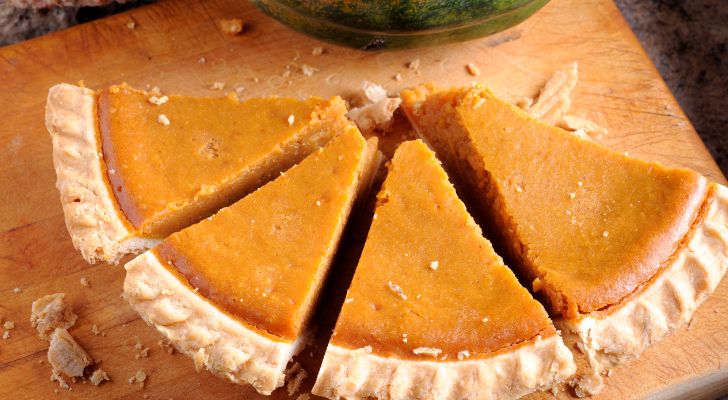
The pumpkin is native to North America and was one of the early exports of French settlers in Eastern Canada.
In the 17th century, North American colonialists would have made pumpkin pies, but they were likely savory dishes rather than the sweet pies of today.
In the early 19th century, pies like this made their way into Canadian cookbooks and onto the Thanksgiving table.
A Canadian astronaut celebrated Thanksgiving in space!

In 2014, Chris Hadfield and his crew mates celebrated Thanksgiving a little differently than most.
Unfortunately, it was not the bountiful feast most North Americans would be accustomed to. Instead, it was smoked turkey, cornbread, cranberry sauce, and desserts.
Like all meals in space, the food was dehydrated to save weight and space, then rehydrated and heated in a small heating device.
It was then held down by magnets and Velcro to keep it from floating around the ISS.
During WWI, French locals held a Thanksgiving ceremony for Canadian troops.
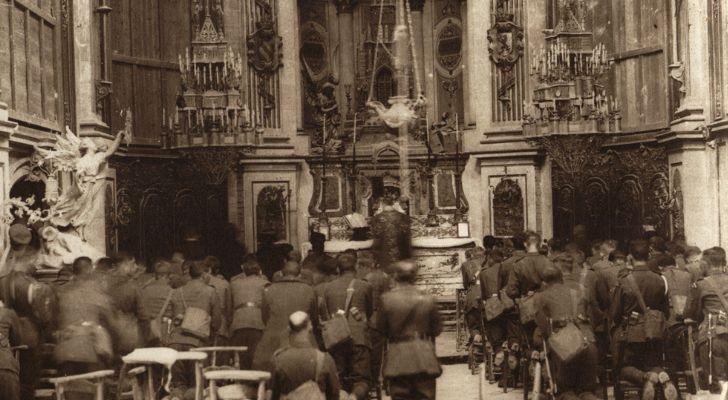
Towards the end of the First World War, in 1918, Canadian troops liberated the citizens of Denain.
Having spent most of the war under German rule, the French people were extremely grateful to their Canadian saviors.
To show its gratitude, the town held a Thanksgiving ceremony at its church, with soldiers and townsfolk spilling out into the streets to celebrate the soldiers who risked their lives to save them.
Granville Island celebrates Thanksgiving with a turkey trot.
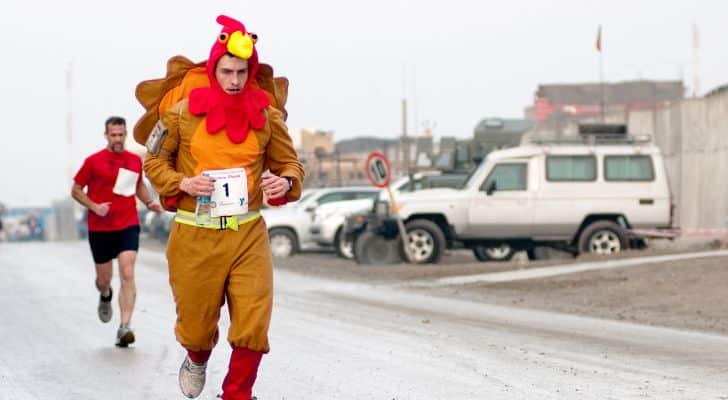
No, this is not a running race for turkeys! Instead, it’s a fun run held on Thanksgiving by the Vancouver running community.
The race is 6.2 miles (10 kilometers) long, and about 2,000 runners compete in it, often wearing turkey hats and maple leaves.
In the spirit of Thanksgiving, runners give back by raising funds for food banks and charities in Vancouver.
Different provinces in Canada do Thanksgiving dinner differently.
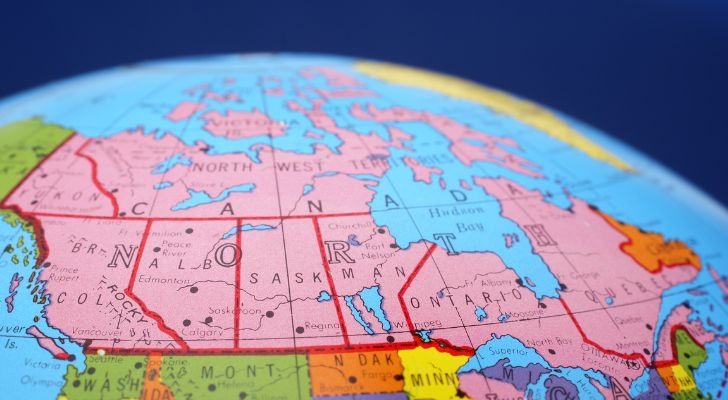
In French-speaking Quebec, Thanksgiving is called Action de Grâce and is not celebrated with a huge feast like in the rest of Canada or the US.
Instead, people often go for a hike to see the fall leaves or go apple picking.
In Newfoundland, people eat Jigg’s Dinner, a boiled dinner consisting of salt beef boiled together with potatoes, carrots, cabbage, turnips, and greens.
For dessert, pease pudding and figgy duff are cooked in the same broth used to boil the dinner.
Over at the Ontarian Thanksgiving table, you might not find pumpkin pie. Instead, you’ll be served butter tarts, which are little pastries with a syrup filling.
From its early beginnings between First Nation people and European settlers to its modern-day celebrations, there is so much more to Canadian Thanksgiving than meets the eye.
Whether you’re spending this day feasting with family, turkey trotting, or floating in space, make sure to remember and appreciate the diverse and beautiful life around you.

